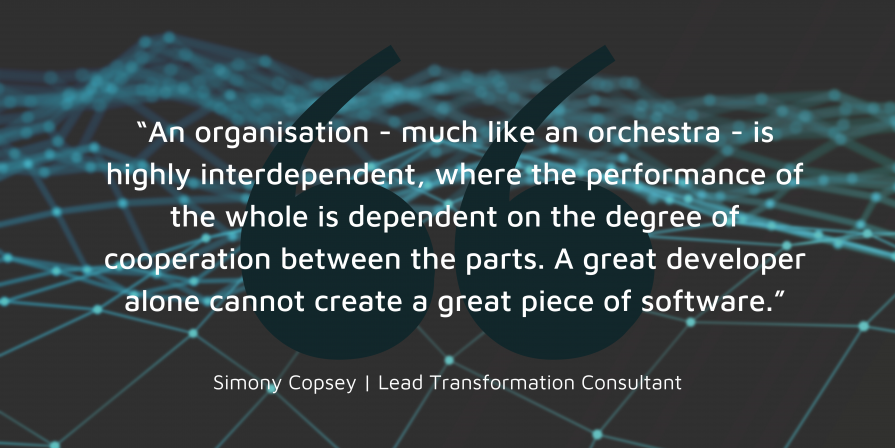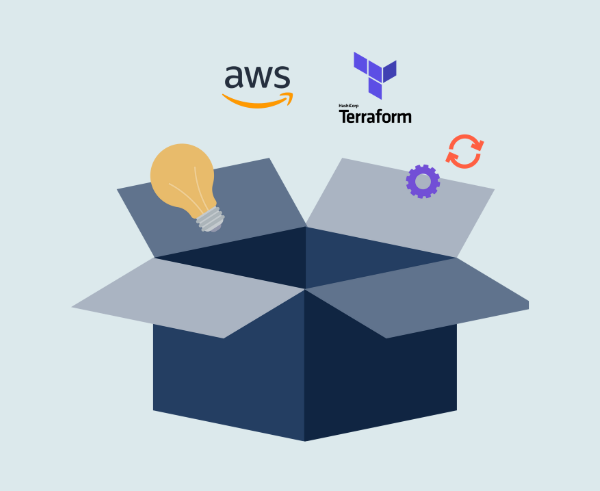Coaching at the Organisational Level

Organisations are Highly Interdependent
Let’s start with a Gedunken thought experiment. We particularly like this one that comes from The Vanguard Method – a consultancy combining modern management theory and psychology to support deep organisational change.
Let’s imagine a washing Machine repair person named Dai. Dai works for an organisation that has three main functions. The first function is the contact centre, which is responsible for answering customer calls and booking repair appointments. The second is the depot, responsible for ensuring we have sufficient vans and spare parts. Finally, we have the logistics function that ties it all together – matching a repair person to an appointment, along with the appropriate van and spare parts.
First question: If you were Dai, what would you need to be able to fix the washing machine right, first time?
Perhaps your answer included the below:
- Spare parts
- Tools
- Transport
- Machine manufacturer and model
- Training and skills
- Description of problem
- Good attitude
- Customer name and address
Second question: Of all the things you’ve listed, what does Dai have control over?
At this point, we may realise Dai has little control over anything he needs to be successful in his role. Perhaps he has some control over his attitude, but even this depends on whether he has all the other things he needs.
This brings about an interesting realisation, summed up well by Deming: “The system that people work in – and the interaction with people – may account for 90 or 95 percent of performance”. In other words, only 5% of organisational performance relates to the capability of the individuals, whereas 95% depends on the organisational system and the interactions between people.
To bring this point out more clearly, let’s discuss an example taken from The New Economics. The score of a bowling team is simply the sum of their individual scores at the end of the game. In this setting, where each individual need only maximise their own score for the team to be successful, we can see each individual is independent.
An orchestra, on the other hand, must cooperate to be successful – they must work in harmony. As Deming elaborates: “The players are not there to play solos as prima donnas, each one trying to catch the ear of the listener. They are there to support each other. Individually, they need not be the best players in the country. […] An orchestra is judged by listeners, not so much by illustrious players, but by the way they work together.”
Then organisations, like the one in which Dai finds himself, where no individual can be successful in isolation. In a software company, a great developer alone cannot create a great piece of software. She requires a clear business strategy, a good product design, a finance and people team that can hire good people and pay them well, procurement of the right tooling, access to good software testing – and the list goes on.
We’ve seen a bowling team has a low level of interdependence, where the performance of the whole team is more closely tied to individual ability. Whereas, an orchestra or organisation is highly interdependent, where performance of the whole is dependent more on the degree of cooperation between the parts.

Summary:
- Coaching individuals is necessary but not sufficient to improve organisational performance
- Improving organisational performance depends on improving how the parts interact
Treat Causes, Not Symptoms
I was fortunate to consult with a large organisation, which I will refer to as Cyberdyne Systems. Cyberdyne Systems had a large programme of work underway to rewrite their systems, aimed at reducing annual customer servicing costs. This programme of work was being delivered by an outsourcer, who would eventually hand over responsibility to nascent internal software development teams.
My focus was coaching the ‘Platform’ team, who were responsible for manual deployment, and for helping move the organisation to a continuous delivery model – where developers can deploy their own changes.
At face value, it was clear that the Platform team were encountering several obstacles:
- They could not come to agreement
- There was low engagement during meetings
- They seemed frustrated and demotivated
- They hesitated to pick up work
- Work was piling up
As a coach, I attempted to tackle each obstacle as best I could – I attempted to facilitate decision making, reduce the number of meetings where possible, run team building exercises to build trust, and support the product owner in assigning work to the team.

My actions – though well-intended – only worsened the situation at Cyberdyne Systems. By facilitating decision making, the team stepped back and engagement reduced. By reducing the number of meetings, teams had less opportunities to work through decisions and come to agreement. Running team-building exercises took significant time, and caused work to further pile up. And by helping the PO assign work, I was flying in the face of autonomy and furthering frustration and demotivation.

The problem was that I was focusing on the tip of the iceberg. Each obstacle is an effect of something deeper and begs the question “why?”: Why is work piling up? Why are the team feeling frustrated and demotivated? I needed to shift my focus to finding and treating the underlying cause to eliminate the effects.
Ackoff once said that “in a system, the best way to treat a problem is seldom where the problem appears, because of the interactions of the parts. […] We do not try to cure a headache by brain surgery, but by putting a pill in the stomach.” Unfortunately, I’d been attempting brain surgery.
Let’s look at some other examples to ensure the concept feels clear. If we find our house smells, we don’t simply spray air freshener. We know spraying air freshener will only treat the effect (bad smell) and – at best – will offer only temporary relief. We instead need to find what is causing the bad smell – perhaps our pet has left us a ‘present’?
Similarly, painkillers may offer temporary relief for headaches, but preventing recurrence requires us to understand and remove the cause – perhaps dehydration or bad posture.

Icon Credit: Freepik, Good Wave, LAFS, sandiatresna, Andy Horvarth, multiverse.plus
A more subtle effect is rising costs in an organisation. Improving the situation requires us to first find what is causing costs to rise. One example may be that measuring project success as delivering on time, budget and scope is leading to developers needing to take shortcuts. These shortcuts increase the complexity of the IT estate, and cause each subsequent project to require more technical analysis, implementation time, and testing. Over time, projects increase in duration and cost.
So what does this mean for Cyberdyne Systems? Whilst we’ve discussed five undesirable effects I’d observed, there were actually several more. If I was to try to find and treat all the underlying causes, wouldn’t that take a huge amount of investigation and improvement work? As Eli Goldratt suggested: “Focusing on everything is synonymous with not focusing on anything.”
There is one final observation that can help us, and this comes from Lisa J Scheinkopf. She suggests that “Newton’s Rules of Reasoning in Philosophy have guided scientists since the early 1700s to recognize that ‘nature is simple and consonant with itself,’ and thus few causes are responsible for many effects rather than the other way around.”
This means that – if we trace back far enough – the causes of undesirable effects should converge. Visually, we should see something similar to the below.

Whilst we may not find one cause underlying all undesirable effects, the number of causes should be much fewer than the number of effects. This gives us leverage: we can focus our effort on just a few common underlying causes to uproot many undesirable effects.
Summary:
- Obstacles are often undesirable effects of underlying cause(s)
- Focus efforts on common cause(s) to eradicate many obstacles with less effort
Enter: The Current Reality Tree
Let’s return to Cyberdyne Systems. As we’ve seen, attempting to treat each obstacle/effect in isolation leads to a tangled muddle of even greater pain. So how can we find and treat the underlying causes of the obstacles?
The Theory of Constraints was introduced by Eli Goldratt as a set of logical thinking tools for applying a scientific approach to organisational change. One of these logical thinking tools is the Current Reality Tree – a cause-and-effect diagram for tracing back to find the underlying common causes to undesirable effects.
The diagram uses arrows to represent an “if then” statement, and a circle representing an “and” clause:

Let’s take a look at a simplified version of the Cyberdyne Systems Current Reality Tree, which I produced in collaboration with EngineerBetter – a consultancy that supports technical leaders.

Whilst a narrated video walkthrough of the Current Reality Tree is available here, in summary the Current Reality Tree helped identify a single cause on which to focus: the outsourcing contract. Changing the fixed scope, fixed time, fixed price contract could reduce the need for technical shortcuts, and create space for technical decisions that support continuous delivery. This would allow the Platform team to focus on automation and to grow the skills that matter to them, helping the programme achieve its objective of reducing annual customer services costs.
The diagram also helps me understand that the behaviours of the platform team were rational given the system: I too would feel demotivated and frustrated to pick up work that did not relate to my role or career path. As Deming said: “a bad system will beat a good person every time.”
Summary
- Improve organisational performance by improving the system and interactions.
- Cause-and-effect thinking allows us to understand the system & interactions, so that:
-
-
- We can focus efforts on cause(s) and eliminate their effects (obstacles)
- We can understand why changes anywhere that isn’t a common cause leads only to temporary improvement
- We can accept why previous attempts to improve things may have been unsuccessful, and improve future attempts
-
- Every model is wrong, but some models are helpful
Do these problems sound familiar? Have you tried to improve a situation, only to get an unexpected result? Simonwould love to hear from you to discuss how we might be able to help.
Learning More
- It’s Not Luck is a business novel showing the Current Reality Tree in use.
- The New Economics lays out new management principles for transformation.
- Beyond Command and Control helps challenge our beliefs about managing staff.
- The Logical Thinking Process shows how to apply all Theory of Constraints tools.
We also host a Miro board where you can practise your cause-and-effect-thinking to create a small Current Reality Tree.
This blog is written exclusively by the OpenCredo team. We do not accept external contributions.



